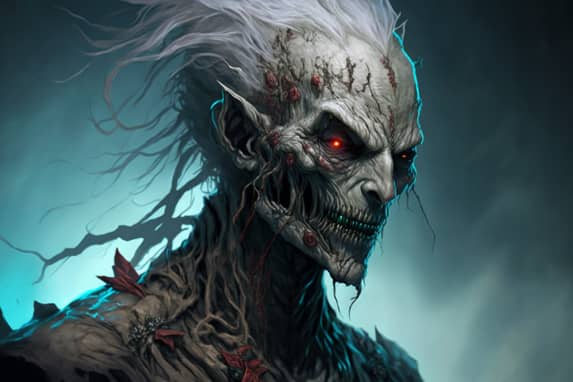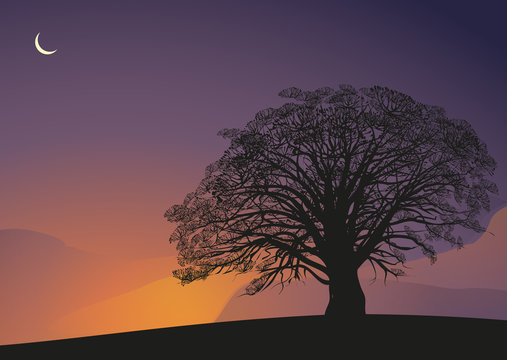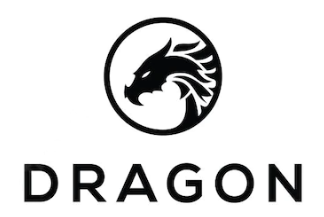The History and Origin of the Ghoul: From Myth to Modern Monster
Are you familiar with the creature known as the ghoul? It’s a monster that has been feared for centuries, and its origin story is just as mysterious as the creature itself. In this blog post, we’ll dive deep into the dark history of the ghoul and explore how it evolved from myth to modern monster. Get ready to uncover some chilling secrets!

The ghoul as a horror icon
The ghoul is one of the most recognizable horror icons, and has been featured in various works over the years. The origins of the ghoul are shrouded in mystery, but it is thought to have originated from ancient myths and folklore. The ghoul is often associated with death, and is often depicted as a skeletal figure with sharp teeth and claws. The ghoul has been used as a symbol for horror and terror, and has been featured in a wide variety of works over the years.
The ghoul in literature and film
One of the most recognizable horror icons is the ghoul, a gruesome creature with decomposing flesh and sharp teeth. The origins of the ghoul are rooted in ancient myth and folklore, but they have also become an iconic figure in modern horror films.
The ghoul first appeared in ancient Egyptian myths and stories. They were usually supernatural beings that feasted on human flesh, and were often depicted as monstrous creatures with heads on two twisted spines. In later centuries, the ghoul was adopted by European writers and artists, who used them to create o scary stories about death, decay, and madness.
Some of the most famous works that feature ghouls include Edgar Allan Poe’s “The Masque of the Red Death,” which features a monsters that looks like a human skeleton covered in red gore; H.P Lovecraft’s “At The Mountains Of Madness,” which tells the story of explorers who journey into an underground world where giant creatures roam; and Stephen King’s “It,” which features a group of children terrorized by an evil clown doll known as Pennywise.
Today, the ghoul continues to be one of the most popular horror icons around. They can be found appearing in movies, books, comics, video games ,and even theme park attractions . If you’re looking for some spine-tingling horror inspiration, don’t forget about these undead fiends!
The ghoul in folklore and mythology
The ghoul, or ghoulish figure, has been represented in many forms and cultures throughout the world. In some cases, they are elements of folktales and horror stories, while in others they are considered real-life monsters. The origins of the ghoul are largely unknown, but likely date back to ancient mythologies. Today, they continue to appear in popular culture as creatures that haunt our nightmares.
The ghoul in popular culture
Ancient Folklore and Mythology
The ghoul is a monster that has been around for centuries, appearing in folklore and mythology. The word “ghoul” comes from the Arabic word for “dead body.” In ancient times, ghouls were believed to be undead creatures that preyed on the living. Today, the ghoul is often used to describe a monster or ghost that is especially frightening or violent.
The ghoul has been present in popular culture for centuries, appearing in stories, poems, and operas. The word “ghoul” is derived from the Arabic word ghul, meaning “demon.” In medieval Europe and Asia, ghouls were feared as monsters that could turn humans into vampires. Today, the term is more commonly used to describe a character or creature associated with horror fiction and movies.
Ghouls as Literary Monsters
Ghouls have been used as literary monsters for centuries, appearing in stories and poems from around the world. They are often found as horrifying villains or beings that defy human understanding. But what is the history of this creature? And where did it comefrom?
The ghoul first appeared in ancient mythology and folklore from all over the world. In Greece, they were known as Eumenides or The Furies, and were creatures that punished people who had committed crimes against society. In China, they were known as Yurei or specters that haunted battlefields after soldiers had died. There are also references to ghouls in Hindu scripture such as the Bhagavad Gita and the Ramayana.
It is believed that the ghoul originated in Africa and was brought to Europe by the slave trade. In medieval times, ghouls were often used as monsters in stories and poems to frighten children. They were also used as villains in plays and novels.
Today, ghouls are still used as literary monsters. They can be found in stories such as Stephen King’s novel The Shining and the movie adaptation, or in poems such as T.S. Eliot’s The Waste Land. They are also used as villains in video games and movies such as Resident Evil and The Conjuring.
Reimagined and Reinterpreted Ghouls
The ghoul has permeated popular culture in various ways over the years. From appearing in horror movies and literature, to being depicted as a sinister creature in video games, the ghoul has become ubiquitous. In some cases, the ghoul is a well-known entity with an established history. For example, vampires originate from legend and lore dating back centuries. In other cases, however, the concept of the ghoul may be more recent or inspired by modern trends and fads.
One example of a contemporary incarnation of the ghoul can be found in haunted houses. These attractions often feature actors dressed up as zombies or other undead creatures that guests are encouraged to avoid. While these haunts may have originated in countries such as America where horror movies are popular, they have since become popular in other countries as well. In some cases, the ghoul has even been reimagined as a playful creature that is used to frighten guests. For example, one haunted house in the United Kingdom features a character known as The Ghoul who is dressed up like a clown and scares guests with his evil laughter.
While the ghoul has been present in various forms throughout history, it is likely that its popularity will continue to grow. In part, this is because the ghoul is a versatile creature that can be used to represent a variety of different concepts and emotions.
The ghoul in the modern world
Ancient Beliefs and Legends
In the modern world, ghouls often take on a negative connotation as monsters that stalk the night, prey on human flesh and souls, and are feared by many. However, throughout history there have been different interpretations of the ghoul. In ancient cultures, ghouls were usually seen as creatures that were half-human and half-monster. They were sometimes thought to be punished or possessed by evil spirits, but they also had a place in mythology and folklore as symbols of transformation or death. Today, ghouls continue to be portrayed in various ways across societies around the world. Some people see them as fascinating creatures that can tell amazing stories, while others fear them completely.
The Ghoul in Popular Culture
The ghoul has been around for centuries, but it has recently become a popular monster in the modern world. The ghoul is a creature that is often depicted as a hideous, skeletal figure with green or black skin. The ghoul is said to be the spirit of a dead person who has not been buried properly and has access to dark magic. The ghoul is also known as a vampire, and it is said that they can drink blood from humans.
The ghoul has been portrayed in many different ways in the modern world. In some cases, the ghoul is used as a symbol of fear and evil. For example, the character Hannibal Lecter from the movie Hannibal was based on a real ghoul named Dr. Frederick Chilton. In this movie, the ghoul is a character who is evil and murderous, and he is portrayed as a scary image to audiences.
Other times, the ghoul has been used in more positive ways. For example, the ghoul has been used in horror movies to create suspenseful scenes. This is especially true in horror movies that are set during Christmas time or Halloween season, when people are likely to be more scareable. Additionally, the ghoul can be used as an element of comedy in some cartoons and sitcoms. For example, Rugrats featured a character named Angelica who was said to be a vampire. Her parents were always worried about her safety, and she often played on their fears by pretending to be a vampire.
Overall, the ghoul is a popular monster in the modern world. It is used to create fear and suspense in horror movies, and it is also used as an element of comedy in some cartoons and sitcoms.
Ghouls in Modern Horror Films
The ghoul has been a staple in horror films for decades, and is often used to represent the dark side of human nature. In the modern world, ghouls can be found in both fiction and reality.
In fiction, ghouls are often used to represent the darker side of human nature. They are often used to represent the fears that people have about death and the afterlife. This is especially true in horror films, where ghouls are often used to represent the fears that people have about death and the afterlife.
In reality, ghouls can be found all over the world. They can be found in both rural and urban areas. They can be found in both developed and developing countries. They can be found in both hot and cold climates.
The ghoul is a staple in horror films, and is often used to represent the darker side of human nature. In the modern world, ghouls can be found in both fiction and reality.
Exploring the Ghoul’s Impact on Society
The ghoul is an often misunderstood and feared creature in the modern world. While there are many different interpretations of what a ghoul actually is, it can be broken down into two main categories: mythological creatures and horror movie monsters.
Mythological ghouls are typically undead beings that consume the flesh of the living or creatures that have died but still walk among the living. In some cases, they are evil spirits or demons who feast on human flesh to satiate their hunger for cruelty and death. Some believe that ghouls may haunt graveyards or places where death occurs for pleasure, as part of a dark curse placed upon them by those who have passed away.
Movie monsters, on the other hand, are usually slimy, green-skinned creatures that crave human flesh. They are often portrayed as monsters that lurk in dark, abandoned places, waiting to prey on innocent people. Some of the most famous ghouls in history include the Frankenstein monster, the Wolfman, and the Dracula.
The ghoul has a long and varied history that has been explored in various works of fiction and non-fiction. While it is often portrayed as a frightening and evil creature, the ghoul has also been used as a symbol of fear and terror in popular culture. In particular, the ghoul has been used extensively in horror movies to create an atmosphere of suspense and dread.

The ghoul in medicine and science
The ghoul has been a staple in horror stories and folklore for centuries, and has even found its way into popular culture. But what is the ghoul, really? And where did it come from?
The ghoul is actually a term that originated in medieval Europe. At the time, people believed that ghouls were undead beings that roamed the countryside at night, feeding on human flesh. This idea gradually spread to other parts of the world, and the term eventually became synonymous with any monster or creature that feeds on human flesh, including zombies and vampires.
Today, the ghoul is still a popular topic for horror stories and movies. In medicine and science, the ghoul has also had a significant impact. For example, researchers have used the ghoul to study brain diseases such as Alzheimer’s disease and dementia. And doctors have used the ghoul to treat patients with brain injuries by surgically removing part of their brain.

The ghoul in the paranormal
Ancient Origins of the Ghoul
The ghoul, which first appeared in European folklore in the Middle Ages, is generally thought to be a creature that takes on the form of a corpse that has been reanimated by supernatural forces. The ghoul is said to haunt and prey upon the living, particularly those who have sinned or done evil deeds.
Although there are many variations of the ghoul story, most agree that it likely originated as a fear response to corpses that had been left unburied for long periods of time. It was also likely influenced by images of zombies, which were first described in Western literature in about 1632. In any case, the ghoul has remained an enduring monster throughout history.
Legends and Folklore of the Ghoul
The ghoul has been depicted in many ways throughout history. In ancient times, ghouls were often portrayed as monster-like beings with dark skin and protruding eyes who feasted on the dead. Today, the ghoul is most commonly associated with horror movies and literature, where it is frequently depicted as a zombie-like creature that scavenges on the remains of dead humans or animals. However, according to legend, the ghoul predates zombies by centuries.
According to Arab folklore, the ghoul was first created by Allah as a punishment for humanity. He made them fall into sin and then punished them by turning them into monsters that preyed on the living. This legend suggests that the ghoul is not solely a product of superstition and terror, but has a historical basis as well.
The Rise of a Pop Culture Icon
The ghoul as a pop culture icon can be traced back to 1820s England, where it originated in the writings of Thomas de Quincey. In his essay “On Murder Considered as One of the Fine Arts“, de Quincey introduced the idea that murderers could enjoy a sort of macabre pleasure derived from their actions. This conception eventually found its way into horror literature, cinema, and other popular media, helping to create the modern image of the ghoul.
In recent years, the ghoul has enjoyed a resurgence in popularity thanks largely to works such as novels by Stephen King and movies such as The Exorcist and The Omen. Today, there is even an annual World Horror Convention dedicated to celebrating this enigmatic figure.
Exploring Modern Representations
The ghoul has been a part of popular culture for centuries, appearing in stories, movies, and even in modern day folklore. The origins of the ghoul are shrouded in mystery, but it is thought to have originated from ancient Egyptian mythology. The ghoul was a creature that resembled a human but had a skeletal body and face. It was said to feast on the flesh of the dead, and was feared by all who encountered it.
Over time, the ghoul has evolved into a more recognizable monster. In literature and film, the ghoul is often depicted as a terrifying figure with razor sharp teeth and claws. It is also common to see the ghoul portrayed as a creature that can transform into a hideous form. Today, the ghoul is still a popular figure in the paranormal world, and is often used as a symbol of evil.

The ghoul in the future
With horror becoming an increasingly popular genre, ghouls are bound to make a comeback in the future. A recent study found that 58% of Americans believe in ghosts, and 20% of them believe in zombies. This tells us that there is huge potential for the ghoul to become one of the most popular monsters again.
The traditional ghoul is a creature that typically has dark skin, pointed ears and lips, and bloodshot eyes. It usually walks with a jerky gait, and its hands are often unkempt or bone-white from years of feeding on human flesh. In some cases, the ghouls might have claws instead of fingers.
The ancient Greek historian Herodotus wrote about ghouls in his book The Histories , which was written around 450 BC. He claimed that they were employed by certain deities as agents to punish humans who had sinned against those deities. Some modern sources claim that the first ghouls probably originated from corpse-eating leeches that developed into creatures known today as vampires .
The ghoul has come a long way since its first appearance in mythology and folklore. It is now an iconic creature of horror, found everywhere in literature, film, popular culture, medicine and science, the paranormal and beyond. Whatever form it takes in the future – whether real or imagined – the ghoul will likely remain an essential part of our scary cultural landscape.

Shoptimizer Blog
Meditation williamsburg kogi blog bushwick pitchfork polaroid austin dreamcatcher narwhal taxidermy tofu gentrify aesthetic.
Humblebrag ramps knausgaard celiac, trust fund mustache. Ennui man braid lyft synth direct trade.


